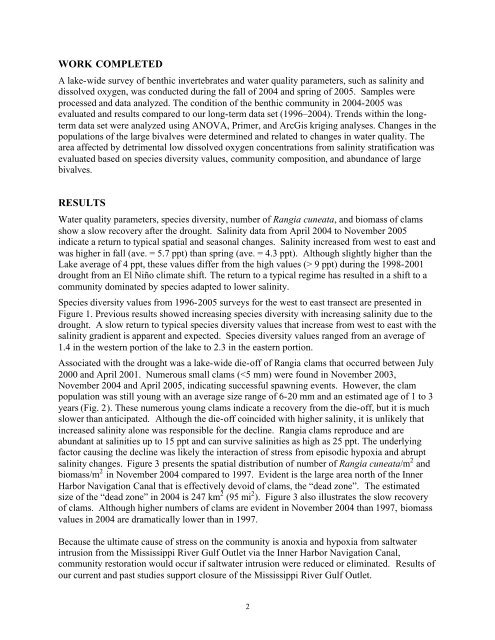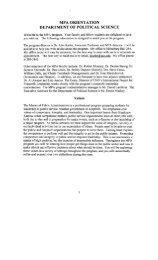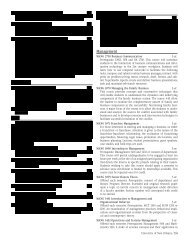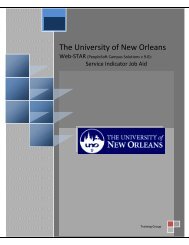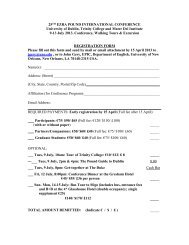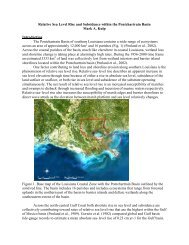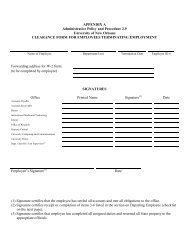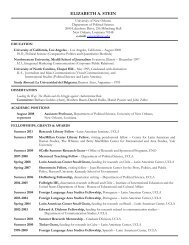Link to full text - Pontchartrain Basin Clearinghouse - University of ...
Link to full text - Pontchartrain Basin Clearinghouse - University of ...
Link to full text - Pontchartrain Basin Clearinghouse - University of ...
- No tags were found...
You also want an ePaper? Increase the reach of your titles
YUMPU automatically turns print PDFs into web optimized ePapers that Google loves.
WORK COMPLETED<br />
A lake-wide survey <strong>of</strong> benthic invertebrates and water quality parameters, such as salinity and<br />
dissolved oxygen, was conducted during the fall <strong>of</strong> 2004 and spring <strong>of</strong> 2005. Samples were<br />
processed and data analyzed. The condition <strong>of</strong> the benthic community in 2004-2005 was<br />
evaluated and results compared <strong>to</strong> our long-term data set (1996–2004). Trends within the longterm<br />
data set were analyzed using ANOVA, Primer, and ArcGis kriging analyses. Changes in the<br />
populations <strong>of</strong> the large bivalves were determined and related <strong>to</strong> changes in water quality. The<br />
area affected by detrimental low dissolved oxygen concentrations from salinity stratification was<br />
evaluated based on species diversity values, community composition, and abundance <strong>of</strong> large<br />
bivalves.<br />
RESULTS<br />
Water quality parameters, species diversity, number <strong>of</strong> Rangia cuneata, and biomass <strong>of</strong> clams<br />
show a slow recovery after the drought. Salinity data from April 2004 <strong>to</strong> November 2005<br />
indicate a return <strong>to</strong> typical spatial and seasonal changes. Salinity increased from west <strong>to</strong> east and<br />
was higher in fall (ave. = 5.7 ppt) than spring (ave. = 4.3 ppt). Although slightly higher than the<br />
Lake average <strong>of</strong> 4 ppt, these values differ from the high values (> 9 ppt) during the 1998-2001<br />
drought from an El Niño climate shift. The return <strong>to</strong> a typical regime has resulted in a shift <strong>to</strong> a<br />
community dominated by species adapted <strong>to</strong> lower salinity.<br />
Species diversity values from 1996-2005 surveys for the west <strong>to</strong> east transect are presented in<br />
Figure 1. Previous results showed increasing species diversity with increasing salinity due <strong>to</strong> the<br />
drought. A slow return <strong>to</strong> typical species diversity values that increase from west <strong>to</strong> east with the<br />
salinity gradient is apparent and expected. Species diversity values ranged from an average <strong>of</strong><br />
1.4 in the western portion <strong>of</strong> the lake <strong>to</strong> 2.3 in the eastern portion.<br />
Associated with the drought was a lake-wide die-<strong>of</strong>f <strong>of</strong> Rangia clams that occurred between July<br />
2000 and April 2001. Numerous small clams (


